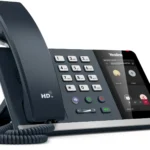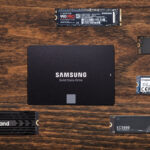mAh Explained: What 10000mAh Actually Means for Your Devices (And Why You’re Probably Buying Wrong)

mAh Explained: What 10000mAh Actually Means for Your Devices (And Why You’re Probably Buying Wrong)
You’re staring at two power banks. One says 10000mAh for $25. Another says 20000mAh for $40. You think: “Double the capacity for less than double the price? Easy choice.”
Wrong.
Here’s what nobody tells you: that 10000mAh number is lying to you. Not because manufacturers are dishonest, but because you don’t understand what mAh actually measures. And that misunderstanding is costing you money and leaving your phone dead when you need it most.
Why This Product Matters for You
Real scenario: You’re at the airport. Flight delayed 4 hours. Phone at 15%. You pull out your “10000mAh” power bank thinking “my phone is 4000mAh, so I’ll get 2.5 charges easy.” You get 1.5 charges. Maybe less. Now you’re rationing battery life for boarding announcements while watching Instagram stories at 5% brightness like a caveman.
This happens because most buyers make purchase decisions based on incomplete information. Families traveling with multiple devices, professionals in back-to-back meetings, students pulling all-nighters – they all make the same mistake: trusting the mAh number without understanding the math behind it.
Let’s fix that right now.
What Does mAh Actually Mean?
mAh stands for milliampere-hour – a unit that measures how much electrical charge a battery can hold. Specifically, it represents the amount of current a battery can supply for one hour before it’s fully discharged.
Think of it like your car’s gas tank:
- Bigger tank (higher mAh) = More miles before refueling
- Smaller tank (lower mAh) = Fewer miles, more frequent stops
A battery rated at 5000mAh can deliver 5000 milliamps (5 amps) for one hour, or 2500 milliamps for two hours, or 1000 milliamps for five hours. It’s about total capacity, not speed.
Here’s the kicker: mAh is NOT the only factor determining battery life. Device type, screen brightness, processor efficiency, and usage patterns all significantly impact how long your battery actually lasts.
The Truth About 10000mAh Power Banks (And Why You’re Getting Scammed)
You bought a 10000mAh power bank. Your phone has a 4000mAh battery. Math says 2.5 charges, right?
Actual charges you’ll get: 1.5 to 2 times. Maximum.
Why the Disconnect?
The actual usable capacity of a power bank is approximately 2/3 of the stated capacity due to energy loss during voltage conversion and charging inefficiencies.
Here’s what happens to your 10000mAh:
- Voltage conversion loss: Power banks store energy at 3.7V but charge devices at 5V. When converting from 3.7V to 5V, a 10000mAh power bank effectively becomes 7400mAh.
- Heat dissipation: Energy is lost as heat during charging – that warmth you feel isn’t cozy, it’s wasted electricity.
- Cable resistance: Cheap cables drain more power than quality ones
- Conversion efficiency: Most power banks operate at 80-90% efficiency, meaning 10-20% of stored energy never reaches your device.
Bottom line: A 10000mAh power bank has an actual usable capacity of approximately 6600-7000mAh.
Real-World Charging Breakdown
Let’s get specific. A 10000mAh power bank can typically charge most smartphones 1-2 times depending on the phone’s battery capacity.
For popular devices:
- iPhone 16 (3561mAh): 2 full charges from 0 to 100%
- iPhone 16 Pro Max (4685mAh): About 1.5 charges
- Samsung Galaxy S23 (3900mAh): 1 full charge plus partial second
- Budget Android (5000mAh battery): 1 to 1.5 charges
But wait – there’s more you’re not being told:
Wireless earbuds (400-600mAh) can be recharged 10-15 times, and smartwatches (300-400mAh) get 15-20 full charges from a 10000mAh power bank.
Choosing the Right mAh Capacity: The No-BS Buyer’s Guide
Stop buying based on price per mAh. Start buying based on your actual use case.
5000mAh Power Banks: The Pocket Warriors
Best for:
- Daily commuters who charge once per day
- Light phone users
- People who want pocket-sized backup
Real capacity: ~3300mAh
Charges: 1 full smartphone charge
Price range: $15-$25
Objection crusher: “But what if I need more?” You don’t. Most people leave home with 70-80% battery. A 5000mAh bank gets you through the day without the bulk.
10000mAh Power Banks: The Sweet Spot
Best for:
- Average users with moderate daily screen time
- Charging phone + earbuds
- Weekend trips
Real capacity: ~6600-7000mAh
Charges: 1.5-2 smartphone charges
Price range: $25-$40
Why this matters: It can fully charge a typical 3000-4000mAh smartphone battery about 1.5 to 2 times, making it ideal for travelers and professionals who need reliable backup without excessive bulk.
Student scenario: You’ve got 8AM to 6PM classes. Phone starts at 90%. By lunch you’re at 40%. Top up with your 10000mAh bank during your 2PM break. End the day at 75%. Study group at night? No sweat.
Browse our complete selection of smart charging solutions here
20000mAh+ Power Banks: The Heavy Hitters
Best for:
- Multi-device users (phone + tablet + laptop)
- Extended off-grid adventures
- Families sharing one power bank
- Professional photographers/videographers
Real capacity: ~13300-14000mAh
Charges: 3-4 smartphone charges or 1.5-2 tablet charges
Price range: $40-$80
Family scenario: Dad needs phone charged. Mom’s tablet is dying. Kids fighting over who gets to watch downloaded Netflix. One 20000mAh bank keeps everyone happy for a full day at the theme park.
Comparing mAh vs. Wh: The Metric That Actually Matters
Here’s where it gets technical (but stick with me):
mAh alone isn’t enough to represent energy capacity – you must account for nominal voltage. This is why a 10000mAh power bank can’t be directly compared to a 10000mAh UPS battery or AA batteries – different voltages mean different actual energy storage.
The better metric: Watt-hours (Wh) measure total energy by factoring in both capacity and voltage: Wh = (mAh × Voltage) ÷ 1000
Example: A 10500mAh battery at 3.7V delivers approximately 38Wh of total energy.
When comparing batteries:
- Same device type? mAh works fine
- Different voltages? Always use Wh
Pro tip for laptop users: Laptop batteries are often rated in Wh rather than mAh because they operate at different voltages. A 20000mAh power bank with USB-C PD (Power Delivery) can charge some ultrabooks, but check the Wh rating first.
The Objections You’re Not Asking (But Should Be)
“Won’t a higher mAh power bank damage my phone?”
Short answer: No. A battery with a higher mAh rating will not damage your device.
Long answer: Your phone draws only the current it needs. A 20000mAh power bank doesn’t “force” more power into your 4000mAh phone battery. Think of it like a water reservoir – your phone takes what it needs, the rest stays in reserve.
What CAN damage your phone: Using non-certified chargers or overcharging can cause damage. Buy from reputable brands with proper certifications.
“Higher mAh means slower charging, right?”
Partially true. A higher mAh battery takes longer to fully charge because it must store more electrical charge.
But here’s the twist: Fast charging technologies like Quick Charge or USB-C PD reduce charging time significantly, but they also reduce usable power bank capacity by 20-30% due to higher voltage conversion losses.
Real-world timing:
- 10000mAh power bank: 4-5 hours to fully charge with 2A charger
- 20000mAh power bank: 8-10 hours with 2A charger
- With 3A fast charger: Cut time by 30-40%
Buyer’s wisdom: Standard 2A charging preserves 20-30% more usable capacity compared to fast charging. Overnight charging with standard speed = more available power when you need it.
“How do I know I’m not buying a fake?”
It’s common to encounter power banks claiming 50000mAh capacity in the size of a 15000mAh model, which is physically impossible.
Red flags to avoid:
- Unusually high capacity for small size
- No brand markings or certifications
- Blurry or unclear power ratings
- Price too good to be true (50% below market rate)
- Seller with no reviews or all 5-star reviews
Quality power banks clearly state rated capacity, model number, manufacturer info, input/output voltage, and conversion efficiency – usually achieving 80-90% efficiency.
Shop certified power banks with transparent specs here
Making the Purchase Decision: Your 3-Step Framework
Step 1: Calculate Your Daily Need
Track your typical usage for 3 days:
- What % battery do you use by end of day?
- How many devices need charging?
- How often do you have outlet access?
Example calculation:
Phone battery: 4000mAh
Daily drain: 60%
Actual need: 4000 × 0.60 = 2400mAh
Recommendation: 10000mAh power bank (gives you 2.5+ days of backup considering efficiency losses)
Step 2: Match to Your Use Case
| Your Profile | Recommended Capacity | Why |
|---|---|---|
| Light user, daily commute | 5000-7000mAh | One emergency charge, minimal bulk |
| Average user, occasional travel | 10000-12000mAh | 2 charges, best portability-to-power ratio |
| Heavy user, frequent traveler | 20000-30000mAh | Multi-device support, extended autonomy |
| Professional content creator | 30000mAh+ | Charges laptop, camera batteries, phone, all day shooting |
Step 3: Factor in Budget Tiers
Entry-level ($15-$25): Basic 5000-10000mAh, slower charging, standard efficiency (75-80%)
Mid-range ($25-$50): 10000-20000mAh, faster charging, better efficiency (85-90%), multiple ports
Premium ($50-$100+): 20000mAh+, fast charging, high efficiency (90-95%), wireless charging, digital display, airline-approved
Budget objection crusher: “The expensive one costs 3x more!” Yes, but it lasts 3x longer (charge cycles), charges 2x faster, and delivers 15-20% more usable capacity. Over 2-3 years, the premium option costs less per charge.
Beyond mAh: The Specs That Actually Matter
Output Ports Matter More Than You Think
- Single USB-A port: Basic, charges one device at standard speed
- Dual USB ports: Charge two devices simultaneously (but splits current)
- USB-C PD (Power Delivery): Charges laptops and tablets, bidirectional (charges power bank faster too)
- Wireless charging: Convenient but 20-30% less efficient than wired
Pro move: Look for power banks with multiple high-powered ports – some models offer 200W total output across two USB-C and one USB-A port, enabling simultaneous fast charging of everything.
Build Quality Indicators
Check case quality: clean surface with no damage, clear markings about power ratings with no blurry text, proper certifications visible, and responsive buttons.
Safety features to demand:
- Overcharge protection
- Short-circuit protection
- Temperature control
- Certified lithium-ion or lithium-polymer cells
Weather and Temperature Considerations
Lithium batteries can lose charge up to 4 times faster in cold weather and may be damaged when charged in freezing temperatures.
Winter tip: Keep your power bank in an inside pocket close to body heat. Your 10000mAh effectively becomes 7000mAh in sub-zero temps.
The Bottom Line: Stop Overpaying for Numbers You Don’t Need
Here’s what matters:
- Real capacity is 2/3 of stated mAh – always factor this in
- Most people only need 10000mAh – anything more is overkill unless you’re charging tablets/laptops
- Quality beats capacity – 85-90% efficiency from a reputable brand delivers more than 95% claims from no-name products
- Match to your use case – not your worst-case scenario fantasy where you’re stranded for 4 days with no power
Decision matrix:
- Just need peace of mind? → 5000-7000mAh
- Actually use your phone heavily? → 10000-12000mAh
- Charging multiple devices daily? → 20000mAh+
- Going off-grid for days? → 30000mAh+ with solar option
Explore our range of reliable power solutions with honest specs and verified performance →
Frequently Asked Questions
Q: Is 10000mAh enough for daily use?
For most people, absolutely. A 10000mAh power bank is enough for most people’s daily needs, typically charging a smartphone 1.5-2 times or a phone plus smaller devices like earbuds.
Q: Does higher mAh mean better performance?
Not necessarily. While higher mAh means longer battery life, the device’s power efficiency and hardware components also play crucial roles in determining overall performance.
Q: How long will my power bank last before I need to replace it?
Power bank lifespan typically ranges from 300-1,000 charge cycles depending on quality – avoid anything with less than 500 cycles. With daily use, expect 1.5-3 years from quality brands.
Q: Can I take a 20000mAh power bank on a plane?
Generally yes, but airlines often restrict power banks above 27000mAh (100Wh) – check specific airline policies before flying.
Q: Why does my phone charge slower from a power bank than from the wall?
Charging speed is influenced by both mAh rating and charging technology – some devices need specific fast-charging protocols (PD, Quick Charge) that not all power banks support.
Ready to buy smart instead of buying big? Understanding mAh isn’t about memorizing formulas – it’s about matching capacity to your actual needs and avoiding marketing BS.
The person spending $25 on a quality 10000mAh power bank with 90% efficiency gets better results than someone spending $40 on a sketchy 20000mAh bank with 75% efficiency.
Find your perfect power solution here – honest specs, real performance, zero BS →
Delivery: 2-5 business days nationwide | 1-year warranty on all power banks | 30-day money-back guarantee
Read also:


 IP Phones & PBX
IP Phones & PBX
 Solid State Drive
Solid State Drive